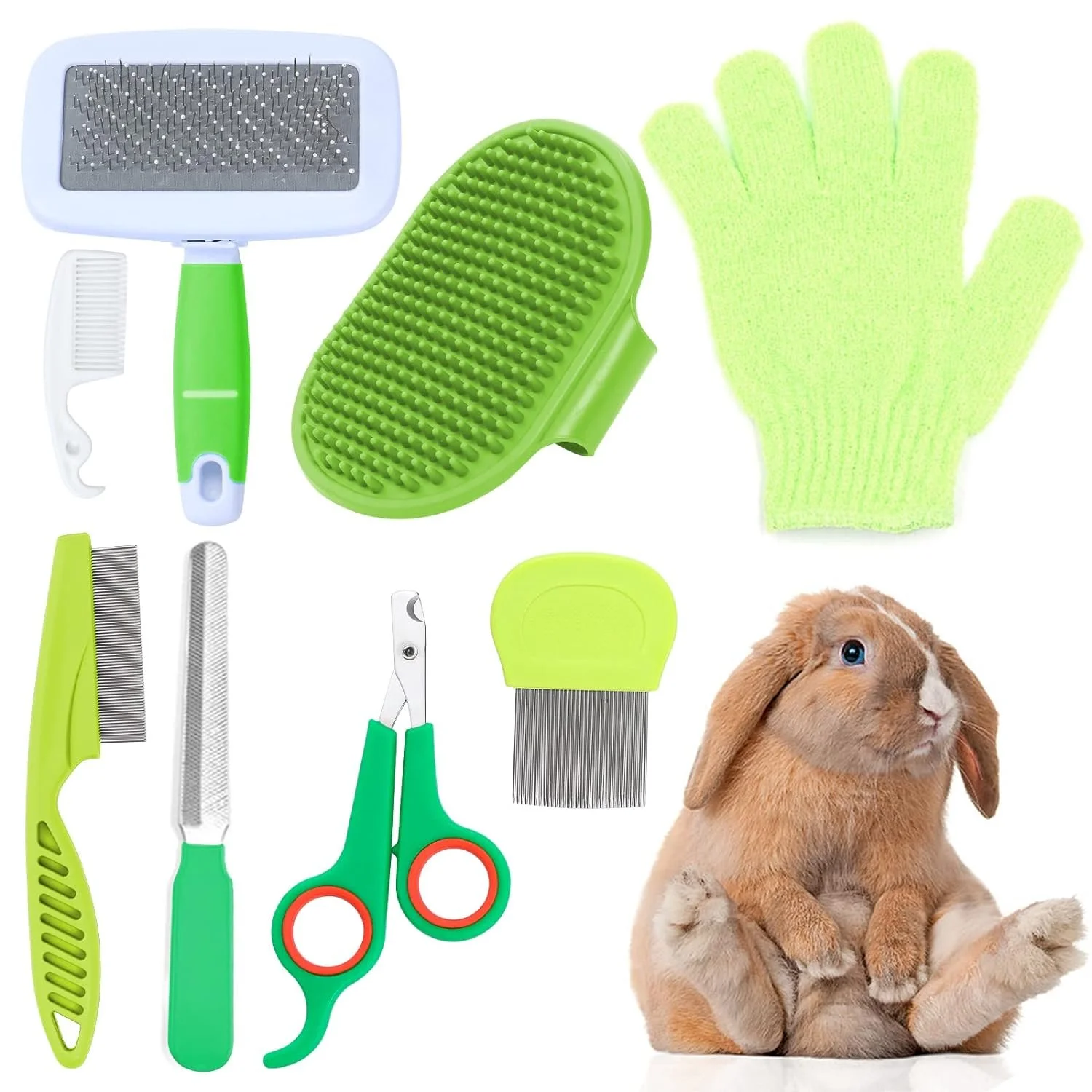A Guide To Grooming Your Angora Rabbit
Angora rabbits are soft, fluffy bundles of joy—but all that gorgeous wool comes with some responsibility. Regular grooming isn’t just about keeping them looking their best; it’s essential for their health, comfort, and happiness. Without proper care, their dense coats can mat, leading to skin problems, overheating, and even digestive issues from ingesting too much fur.
Disclaimer: This post contains affiliate links. This means I may earn a commission should you chose to sign up for a program or make a purchase using my link at no additional cost to you. I only promote products I have used and loved, and you will too!
If you’re a new (or aspiring) Angora rabbit owner, this guide will walk you through the essentials of grooming to help your bunny thrive.
Why Grooming Is So Important for Angoras
Unlike most other rabbits, Angoras produce a long, silky coat that grows continuously. They can’t shed or maintain their coats effectively on their own, so it's up to you to help out. Regular grooming prevents:
Wool block, a potentially deadly condition where swallowed fur blocks the digestive tract.
Matting, which can cause painful skin irritation and make it difficult for your rabbit to move comfortably.
Overheating, especially in warmer months when all that fluff traps extra heat.
Infections or parasites, which hide easily in thick mats or dirty wool.
Grooming Supplies You’ll Need
Slicker brush or wide-toothed comb (dog or cat brushes can work well)
Grooming scissors or blunt-tipped shears
Small mat rake or detangler comb
Lint roller or grooming glove for light maintenance
Nail clippers and styptic powder (for occasional nail trims)
A towel or non-slip mat for safe handling
An Apron to keep all the fluff off of you
I personally love this grooming kit. It has everything I need for my bunnies.
Optional but helpful:
Blower/dryer on cool setting for removing loose fiber and detangling
Wool collection bag if you’re harvesting fiber for spinning
How Often Should You Groom an Angora Rabbit?
It depends on the type of Angora:
Breed Grooming Frequency
English Angora 3–4 times per week
French Angora 1–2 times per week
German Angora 1–2 times per week
Satin Angora 2–3 times per week
Giant Angora 2–3 times per week
These are general guidelines—individual rabbits may need more or less depending on the season, health, and how well they tolerate grooming.
Step-by-Step Grooming Routine
Set Up a Calm Environment
Find a quiet, well-lit area. Place your rabbit on a towel-covered table or your lap. Offer treats and gentle praise throughout.Detangle and Remove Loose Wool
Start by gently brushing your rabbit’s body using a slicker brush or wide-toothed comb. Work in small sections, paying close attention to areas behind the ears, under the chin, and around the legs and belly—prime spots for mats.Clip Mats (Don’t Pull!)
If you find any mats too tight to brush out, carefully snip them away using blunt-ended grooming scissors. Keep the scissors parallel to the skin to avoid cuts.Trim Around Sensitive Areas
Use scissors to gently trim excess wool around the eyes, vent area, and feet. This helps prevent irritation and keeps your rabbit clean and mobile.Harvest Wool (Optional)
If you're spinning the fiber, collect gently plucked or sheared wool during grooming. Be sure your rabbit is calm and the coat is in good condition before removing any fiber.Nail Trimming
Check nails every couple of weeks. If they’re clicking on hard surfaces or getting snagged, it’s time for a trim. Have styptic powder nearby in case of accidents.
Tips for a Happy Grooming Experience
Always support your rabbit’s body during handling.
Keep grooming sessions short and consistent rather than long and stressful.
Use treats or special chew toys as positive reinforcement.
Check for signs of sore hocks, skin issues, or parasites during grooming.
In hot months, shear down your rabbit to a manageable length to avoid overheating.
Final Thoughts
Grooming your Angora rabbit isn’t just a chore—it’s a chance to bond and ensure your fluffy friend stays healthy and comfortable. With a regular routine, the right tools, and plenty of patience, your Angora will look (and feel) like royalty year-round.
Whether you're caring for one as a pet or harvesting their wool for fiber arts, your attention to their coat will keep them hopping happily for years to come.

